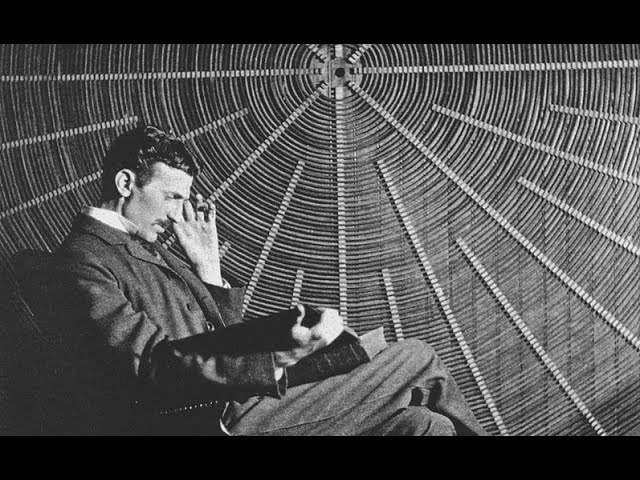Nikola Tesla (10 July 1856 – 7 January 1943) was a Serbian-American inventor, electrical engineer, mechanical engineer, and futurist best known for his contributions to the design of the modern alternating current (AC) electricity supply system. Listen to a free Nikola Tesla audiobook: https://www.amazon.com/gp/search?ie=UTF8&tag=tra0c7-20&linkCode=ur2&linkId=72cf442f293aa9c43f5d1803934cd95a&camp=1789&creative=9325&index=books&keywords=nikola%20tesla%20audiobook
Books:
Tesla, Nikola, My Inventions, Parts I through V published in the Electrical Experimenter monthly magazine from February through June 1919. Part VI published October 1919. Reprint edition with introductory notes by Ben Johnson, New York: Barnes and Noble, 1982; also online at Lucid Cafe, et cetera as My Inventions: The Autobiography of Nikola Tesla, 1919. https://amzn.to/3jSW0kH Glenn, Jim (1994). The Complete Patents of Nikola Tesla. https://amzn.to/2ZNrO3F
Lomas, Robert (1999). The Man Who Invented the Twentieth Century: Nikola Tesla, forgotten genius of electricity. London: Headline. https://amzn.to/3Cz04Oe
Martin, Thomas C. (editor) (1894, 1996 reprint, copyright expired), The Inventions, Researches, and Writings of Nikola Tesla, includes some lectures, Montana: Kessinger. https://amzn.to/31jWyK3
McNichol, Tom (2006). AC/DC The Savage Tale of the First Standards War, Jossey-Bass. https://amzn.to/3bsp8uE
Peat, F. David (2002). In Search of Nikola Tesla. Bath: Ashgrove. https://amzn.to/3pU3Aze
Trinkaus, George (2002). Tesla: The Lost Inventions, High Voltage Press. https://amzn.to/3GD081Q
Valone, Thomas (2002). Harnessing the Wheelwork of Nature: Tesla’s Science of Energy. https://amzn.to/3GzU7TI
Cooper, Christopher (2015). The Truth about Tesla: The Myth of the Lone Genius in the History of Innovation, https://amzn.to/3vZDlbI
Born and raised in the Austrian Empire, Tesla studied engineering and physics in the 1870s without receiving a degree, gaining practical experience in the early 1880s working in telephony and at Continental Edison in the new electric power industry. In 1884 he emigrated to the United States, where he became a naturalized citizen. He worked for a short time at the Edison Machine Works in New York City before he struck out on his own. With the help of partners to finance and market his ideas, Tesla set up laboratories and companies in New York to develop a range of electrical and mechanical devices. His alternating current (AC) induction motor and related polyphase AC patents, licensed by Westinghouse Electric in 1888, earned him a considerable amount of money and became the cornerstone of the polyphase system which that company eventually marketed.Attempting to develop inventions he could patent and market, Tesla conducted a range of experiments with mechanical oscillators/generators, electrical discharge tubes, and early X-ray imaging. He also built a wireless-controlled boat, one of the first-ever exhibited. Tesla became well known as an inventor and demonstrated his achievements to celebrities and wealthy patrons at his lab, and was noted for his showmanship at public lectures. Throughout the 1890s, Tesla pursued his ideas for wireless lighting and worldwide wireless electric power distribution in his high-voltage, high-frequency power experiments in New York and Colorado Springs. In 1893, he made pronouncements on the possibility of wireless communication with his devices. Tesla tried to put these ideas to practical use in his unfinished Wardenclyffe Tower project, an intercontinental wireless communication and power transmitter, but ran out of funding before he could complete it.After Wardenclyffe, Tesla experimented with a series of inventions in the 1910s and 1920s with varying degrees of success. Having spent most of his money, Tesla lived in a series of New York hotels, leaving behind unpaid bills. He died in New York City in January 1943. Tesla’s work fell into relative obscurity following his death, until 1960, when the General Conference on Weights and Measures named the SI unit of magnetic flux density the tesla in his honor. There has been a resurgence in popular interest in Tesla since the 1990s.Tesla wrote a number of books and articles for magazines and journals. Among his books are My Inventions: The Autobiography of Nikola Tesla, compiled and edited by Ben Johnston in 1983 from a series of 1919 magazine articles by Tesla which were republished in 1977; The Fantastic Inventions of Nikola Tesla (1993), compiled and edited by David Hatcher Childress; and The Tesla Papers.Many of Tesla’s writings are freely available online, including the article “The Problem of Increasing Human Energy”, published in The Century Magazine in 1900, and the article “Experiments with Alternate Currents of High Potential and High Frequency”, published in his book Inventions, Researches and Writings of Nikola Tesla. https://en.wikipedia.org/wiki/Nikola_Tesla
